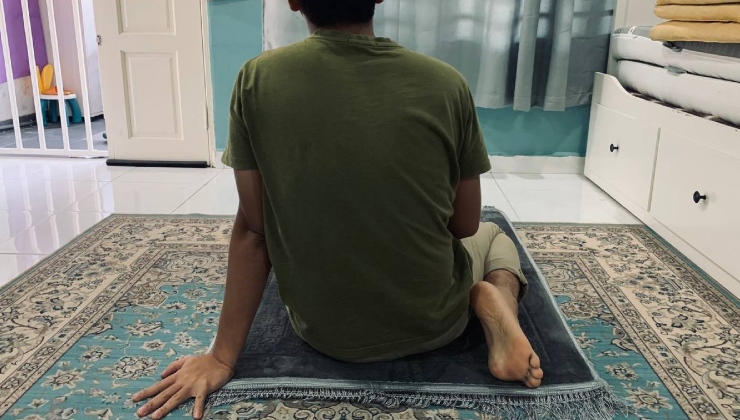Your Kids Are Easily Bored? Here Are 7 Most Effective Communication Tips For Children
According to a clinical psychologist, adults should enter the child’s world and not the other way around so that they feel more comfortable communicating together

Subscribe to our Telegram channel for the latest stories and updates.
We often hear Prophet Muhammad SAW’s hadith that says a child is like a white cloth and it is the parents who will shape them into a Christian, Jew, or Majusi.
However, modeling and educating children requires a lot of patience especially when it comes to serving their every need.
Among the earliest education that is often given by parents or teachers is usually through communication.
However, normal communication such as saying hello, asking their age and name and so on causes boredom among young children and does not necessarily help in improving their morale and confidence.
7 Effective Communication Tips For Children
Clinical psychologist Akif Basri shared seven effective verbal or non-verbal communication tips for children through a tweet on his Twitter page.
These are the 7 communication tips mentioned:
1. Observe what they are interested in and ‘join’ in on the activity
Children most definitely have activities or sports that they are interested in such as running, jumping, playing with dolls and so on.
Therefore, adults should consider ‘entering’ the child’s world instead so the child feels more comfortable communicating together with the adult.
2. Pay full attention to them and acknowledge their actions
Paying attention and praising their actions also indirectly increases their self-confidence in communicating.
For example, when a small child is seen jumping, we should say something like, “Wow! Look at how high you can jump”.
Or when he runs, we can say “Look at how fast he runs”. While he is playing with a toy train, we can play along and make the sound ‘tut tutt, tut tutt’.
Or when he plays with playdoh we can encourage him by saying, “That’s a nice shape you made”.
3. Sit or bend so that your eyes are parallel to theirs
Because the bodies of adults are bigger and taller than children, the communication carried out will have a ‘power gap’ as adults are more in authority causing the group involved to feel a afraid and lack confidence.
However, if the adult sits down when talking to them, the child will feel like he is chatting with his friend.
4. The need to provide more body language
Children prefer communication with someone who gives facial expressions and body movements while chatting.
For example, if the story involves something happy, then the facial expression should be a wide smile and if it is sad, make a pouty facial expression to describe a sad situation.
As for the body movements, we need to over exaggerate things so that they can clearly see our response.
Clinical psychologist Akif Basri
5. Use a strong voice, short sentences, direct and repeat several times
Avoid using overly general and long sentences if you want to ensure that the child clearly understands the instructions given to him.
For example, say “Ali, take the lego, put it in this white container” instead of using sentences that are too long such as “Ha, when you’re done playing, don’t forget to tidy up all the toys until the house is neat, clean, beautiful…”.
6. Modeling
It is better when someone talks while showing a model or way of how the child should do it.
This way can indirectly increase their understanding in addition to increasing their confidence in doing something they are instructed to do.
Say this while taking the lego yourself and placing it into a container:
Ali, take the lego, put it in this white container
Clinical psychologist Akif Basri
After he understands what he needs to do, let him do it by himself.
7. Prompting
If a child does something he was instructed to do only half way because he is distracted by other things, then you should repeat the instructions that have been given.
For example, say:
Ali, take the lego, put it in the white container. We’re not done yet.
Clinical psychologist Akif Basri
“Nama siapa?”
— Akif Basri (@akif_basri) February 9, 2023
“Umur berapa?”
“Tadika mana?”
Ini soalan yang biasa kita tanya pada kanak-kanak untuk mula “engage” dengan mereka.
Tapi soalan2 “adult” ni agak membosankan bagi mereka.
Ini 7 tips untuk komunikasi dengan kanak-kanak dengan lebih berkesan:
This is called prompting and with children, we really have to be patient as we may need to prompt them a few more times.
Based on the Twitter thread shared, it is also understood that the tips given are suitable for children aged between the years two to six.
It is also hoped that by sharing these tips, it will be useful for all, especially parents and teachers who want to educate young children through communication so that a closer relationship with that group can be produced.
Share your thoughts with us via TRP’s Facebook, Twitter, and Instagram.





